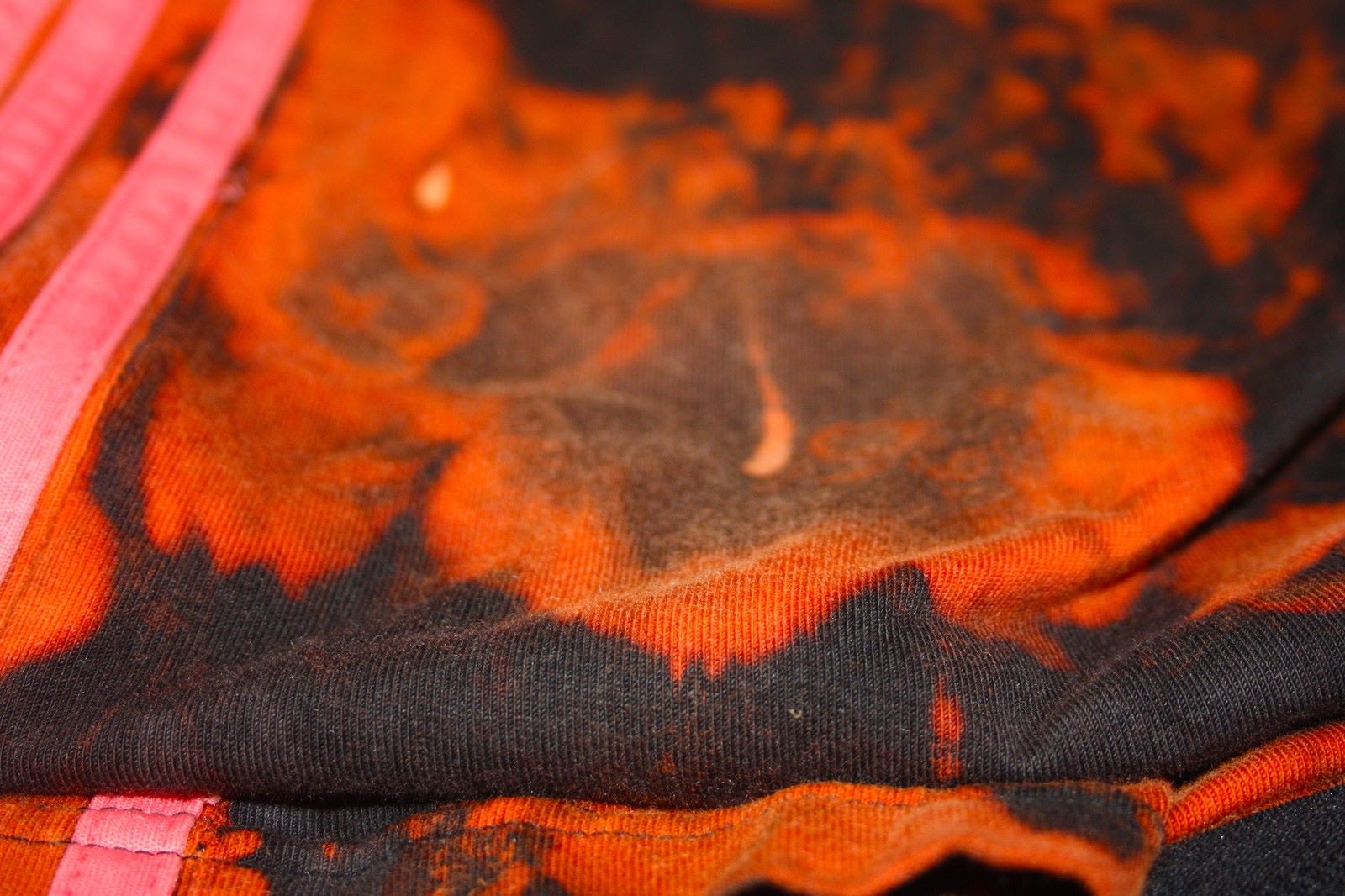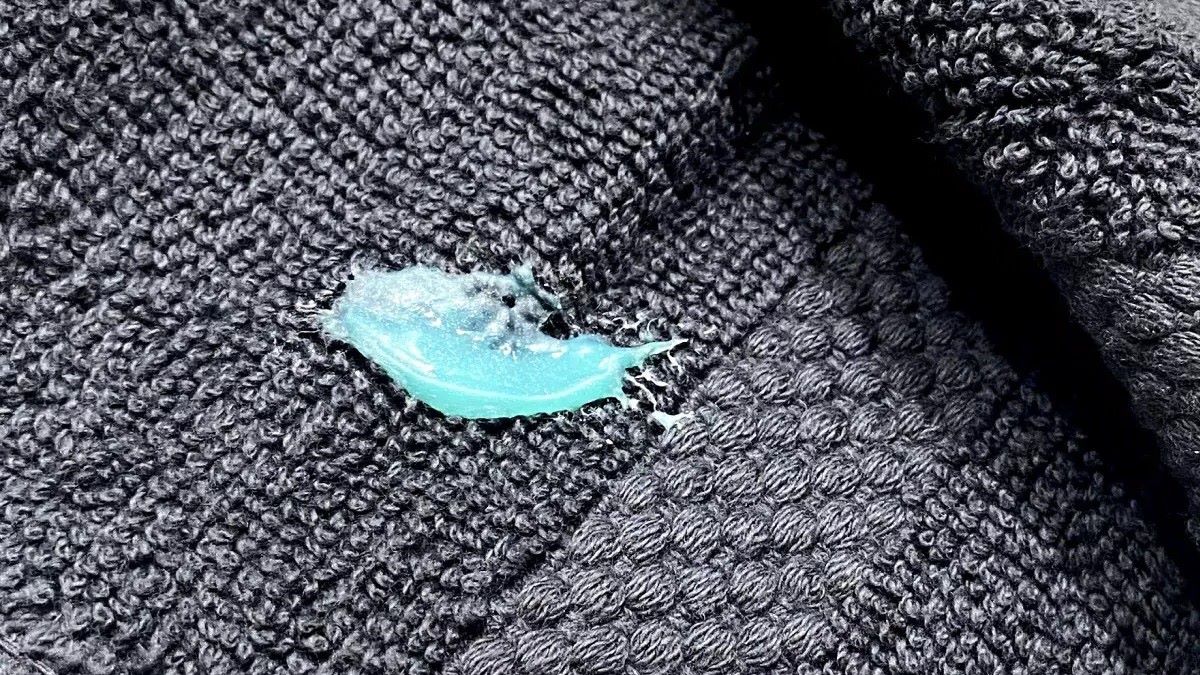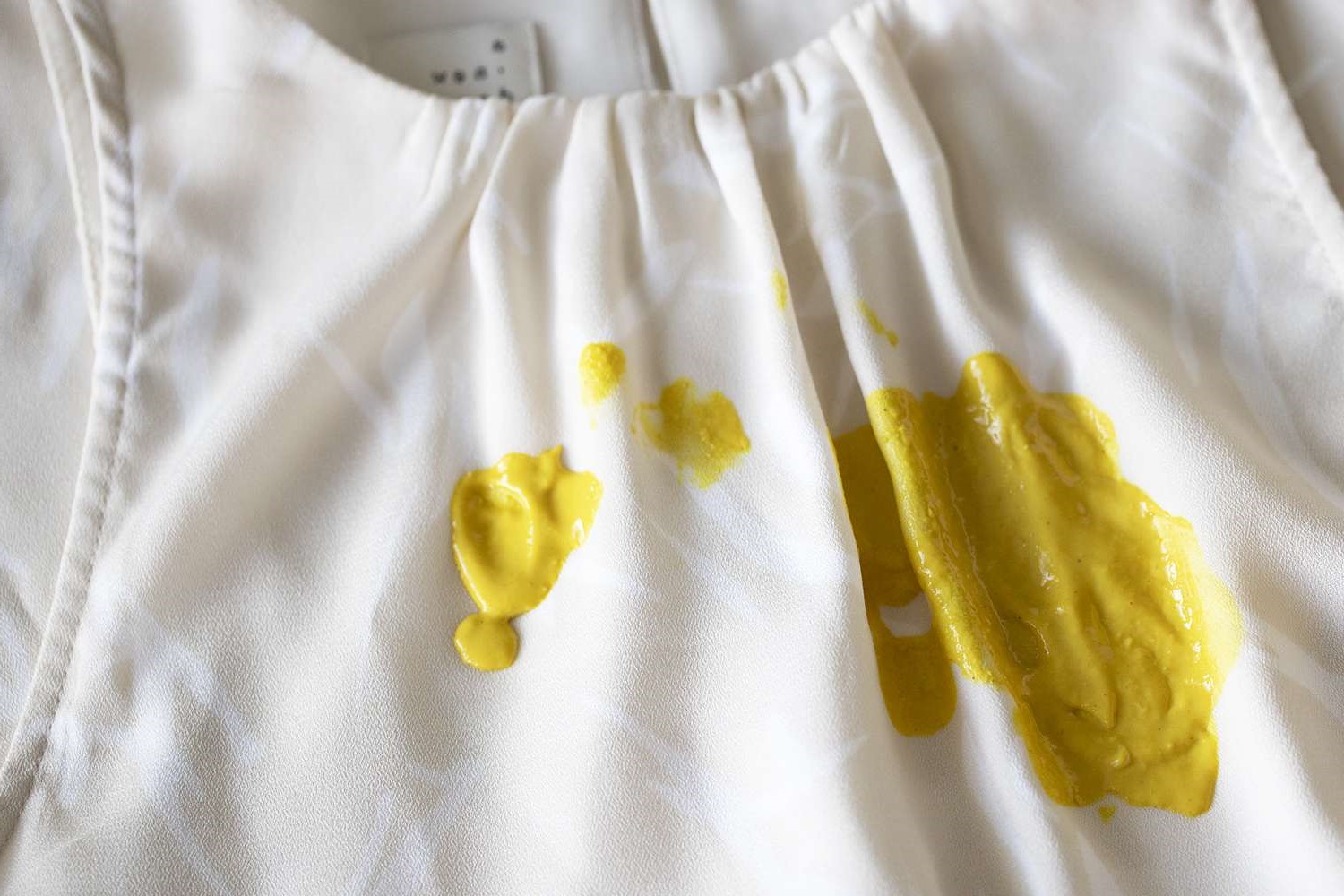Home>Home and Garden>How To Get Diesel Smell Out Of Clothes


Home and Garden
How To Get Diesel Smell Out Of Clothes
Published: March 6, 2024
Learn effective home and garden solutions to remove diesel smell from clothes. Discover simple tips to get rid of the unpleasant odor and refresh your wardrobe.
(Many of the links in this article redirect to a specific reviewed product. Your purchase of these products through affiliate links helps to generate commission for Noodls.com, at no extra cost. Learn more)
Table of Contents
Introduction
Dealing with the stubborn and pungent smell of diesel on clothes can be quite a challenge. Whether it's from a mishap at the gas station or working with machinery, the odor seems to linger, resisting conventional washing methods. However, with the right approach and a few effective techniques, it's possible to eliminate the diesel smell and restore your clothes to their fresh, clean state.
Diesel odor can be particularly persistent due to the nature of the fuel and its ability to permeate fabrics. The distinct, strong smell can be off-putting and may even cause embarrassment in social or professional settings. Understanding the source of the diesel smell and employing targeted strategies to combat it is essential for successful odor removal.
In this comprehensive guide, we will delve into the various methods and products that can help eliminate diesel smell from clothes. From pre-treating garments to selecting the appropriate laundry detergent and exploring natural odor-removing remedies, we will cover a range of effective approaches. Additionally, we will provide valuable tips to ensure that your clothes are thoroughly deodorized and free from any lingering diesel scent.
By following the advice and techniques outlined in this article, you can effectively tackle the challenge of removing diesel smell from clothes and enjoy the confidence of wearing fresh, clean garments once again. Let's explore the strategies that can help you banish the persistent odor of diesel and restore your clothes to their pristine condition.
Read more: How To Get Smoke Smell Out Of Clothes
Understanding the source of diesel smell in clothes
The distinctive and pervasive odor of diesel on clothes stems from the composition of the fuel itself. Diesel fuel contains a complex mixture of hydrocarbons, which are responsible for its potent scent. When diesel comes into contact with clothing, these hydrocarbons can easily adhere to the fabric fibers, leading to the stubborn and lingering smell that is often challenging to eliminate.
One of the primary reasons why diesel odor tends to persist in clothes is the volatile nature of the hydrocarbons present in the fuel. These compounds have a strong affinity for porous materials, such as cotton, wool, and synthetic fabrics commonly used in clothing. Upon contact, the hydrocarbons can quickly permeate the fibers, becoming trapped within the fabric structure. This penetration makes it difficult for conventional washing methods to completely eradicate the diesel smell.
Furthermore, the nature of diesel as a heavy, oily substance contributes to its tenacious presence in clothing. The oily consistency of diesel allows it to cling to fabrics, creating a lasting and pervasive odor that can withstand standard laundering processes.
In addition to the physical properties of diesel fuel, environmental factors and exposure duration also play a significant role in the intensity of the odor. Prolonged exposure to diesel, such as working in environments where the fuel is prevalent, can lead to a more pronounced and enduring smell in clothes. Similarly, accidental spills or contact with diesel at gas stations can result in the impregnation of the odor into clothing fibers.
Understanding the source of the diesel smell in clothes is crucial for devising effective strategies to eliminate it. By recognizing the chemical composition of diesel, its affinity for fabrics, and the impact of exposure duration, individuals can tailor their approach to effectively combat the persistent odor. With this understanding, it becomes possible to implement targeted pre-treatment and laundering methods that specifically address the unique challenges posed by diesel-contaminated clothing.
Pre-treating clothes before washing
Pre-treating clothes before washing is a crucial step in effectively removing diesel smell from garments. This proactive approach targets the embedded diesel odor, preparing the clothes for thorough deodorization during the washing process. By employing specific pre-treatment methods, individuals can significantly enhance the success of odor removal and restore their clothes to a fresh, clean state.
Vinegar Solution
One effective pre-treatment method involves using a vinegar solution to neutralize the diesel odor. Vinegar, known for its natural deodorizing properties, can help break down the hydrocarbons present in diesel and lift the odor from the fabric. To utilize this method, create a solution of equal parts white vinegar and water. Submerge the diesel-affected clothing in the solution, ensuring that the fabric is thoroughly saturated. Allow the garments to soak for at least 30 minutes before proceeding to the washing stage. The acidic nature of vinegar aids in combating the alkaline components of diesel, effectively mitigating the odor.
Baking Soda Paste
Another pre-treatment option is the application of a baking soda paste to the affected areas of the clothing. Baking soda, renowned for its odor-absorbing qualities, can help neutralize the diesel smell prior to washing. To create a baking soda paste, mix baking soda with a small amount of water to form a thick, spreadable consistency. Gently massage the paste into the areas of the garment where the diesel odor is concentrated, ensuring thorough coverage. Allow the paste to sit for approximately 15-20 minutes before rinsing it off. This pre-treatment method effectively targets localized diesel odor, preparing the clothing for subsequent washing.
Read more: How To Get Urine Smell Out Of Clothes
Activated Charcoal Sachets
Utilizing activated charcoal sachets as a pre-treatment step can also aid in absorbing diesel odor from clothes. Activated charcoal is highly porous and possesses exceptional odor-absorbing properties. Placing a few activated charcoal sachets in a sealed container along with the diesel-affected garments can help draw out and trap the lingering odor. Allow the clothing to remain in close proximity to the activated charcoal sachets for several hours or overnight. This pre-treatment method is particularly effective for garments with persistent diesel odor, as the activated charcoal works to actively remove the scent before the washing process.
By incorporating these pre-treatment methods into the diesel odor removal process, individuals can effectively address the embedded smell and enhance the overall success of deodorizing their clothes. These targeted approaches serve to prepare the garments for thorough washing, ensuring that the diesel odor is effectively neutralized and eliminated.
Choosing the right laundry detergent
Selecting the appropriate laundry detergent is a critical aspect of effectively removing diesel smell from clothes. The detergent plays a pivotal role in the deodorization process, as it must possess the necessary cleaning power to eliminate the embedded diesel odor while being gentle on fabrics. When faced with diesel-contaminated clothing, opting for a detergent specifically formulated to tackle tough odors and stains is essential for achieving successful results.
When choosing a laundry detergent for diesel odor removal, it is advisable to prioritize products that are designed to combat persistent smells and deep-seated stains. Look for detergents that are labeled as "odor-eliminating," "stain-fighting," or "deep-cleaning," as these formulations are tailored to address challenging laundry issues, including diesel odor impregnation. Additionally, selecting a detergent that is suitable for both standard and high-efficiency (HE) washing machines ensures compatibility with various laundry appliances, allowing for versatile usage.
Furthermore, considering the fragrance-free or hypoallergenic options is beneficial, especially for individuals with sensitivities to strong scents or chemical additives. Fragrance-free detergents are formulated to clean effectively without leaving behind overpowering scents, making them ideal for deodorizing diesel-affected clothing while minimizing the risk of skin irritation or allergic reactions.
For those seeking a more environmentally conscious approach, eco-friendly and biodegradable laundry detergents offer a sustainable solution without compromising on cleaning performance. These detergents are formulated with plant-based ingredients and are free from harsh chemicals, making them gentle on both fabrics and the environment. By opting for eco-friendly options, individuals can effectively remove diesel odor from clothes while aligning with their eco-conscious values.
In addition to the detergent selection, considering the use of specialized additives, such as odor-eliminating boosters or enzyme-based stain removers, can further enhance the deodorization process. These supplementary products work in conjunction with the chosen detergent to target and neutralize diesel odor, ensuring comprehensive odor removal and restoring the garments to a fresh, clean state.
By carefully evaluating the features and formulations of laundry detergents, individuals can make informed choices that align with their specific odor removal needs. Selecting a detergent that is tailored to combat tough odors, compatible with different washing machines, and suitable for sensitive skin ensures an effective and thorough deodorization process, ultimately restoring clothes to their pristine condition.
Using natural odor-removing methods
Incorporating natural odor-removing methods can be an effective and eco-friendly approach to eliminating diesel smell from clothes. These methods harness the power of natural ingredients to neutralize odors and restore garments to a fresh, clean state without relying on harsh chemicals or artificial fragrances. By leveraging the inherent deodorizing properties of natural elements, individuals can effectively combat the persistent diesel odor while embracing a sustainable and environmentally conscious approach to laundry care.
Sunlight and Fresh Air
Harnessing the natural deodorizing effects of sunlight and fresh air can significantly aid in removing diesel smell from clothes. Sunlight possesses natural antibacterial properties and can help break down odor-causing compounds, effectively reducing the intensity of diesel odor. To utilize this method, hang the diesel-affected garments outdoors in direct sunlight, allowing them to air out for several hours. The combination of UV rays and fresh air works to naturally deodorize the clothing, diminishing the lingering diesel scent and imparting a fresh, sun-kissed aroma.
Read more: How To Get Perfume Smell Out Of Clothes
Citrus-Based Solutions
Citrus fruits, such as lemons and oranges, contain natural oils and acids that can effectively combat odors, including diesel smell. Creating a citrus-based solution by combining freshly squeezed citrus juice with water can serve as a potent deodorizing agent. Submerge the diesel-affected clothing in the citrus solution, allowing the natural acids to penetrate the fabric and neutralize the odor. After soaking for a sufficient duration, proceed with the washing process to thoroughly cleanse the garments and remove any residual diesel scent.
Essential Oils
Utilizing essential oils, renowned for their aromatic and antibacterial properties, can aid in deodorizing diesel-affected clothes. Essential oils such as lavender, tea tree, and eucalyptus possess natural deodorizing and antimicrobial qualities, making them effective in neutralizing persistent odors. Adding a few drops of the preferred essential oil to the laundry detergent or during the rinse cycle imparts a refreshing scent while actively combating the diesel odor. Additionally, incorporating essential oils into the pre-treatment stage can enhance the overall deodorization process, ensuring that the garments emerge free from any lingering diesel scent.
Baking Soda and White Vinegar
Baking soda and white vinegar, staple household ingredients known for their versatile cleaning and deodorizing properties, can be combined to create a powerful natural odor-removing solution. By adding a cup of white vinegar to the wash cycle and sprinkling baking soda directly onto the diesel-affected areas of the clothing, individuals can effectively neutralize the persistent odor. The natural reaction between the vinegar and baking soda works to lift and eliminate the diesel smell, resulting in fresh, deodorized garments after washing.
By embracing these natural odor-removing methods, individuals can effectively combat diesel smell in clothes while minimizing the use of synthetic chemicals and artificial fragrances. These eco-friendly approaches not only contribute to thorough deodorization but also promote a sustainable and natural approach to maintaining fresh, clean laundry.
Additional tips for removing diesel smell from clothes
In addition to the pre-treatment methods, detergent selection, and natural odor-removing techniques, several additional tips can further enhance the effectiveness of removing diesel smell from clothes. These supplementary strategies address specific aspects of the deodorization process, providing comprehensive solutions to combat the persistent odor and restore garments to a fresh, clean state.
Read more: How To Get Gasoline Smell Out Of Clothes
Steam Cleaning
Utilizing steam as a deodorizing method can be highly effective in eliminating diesel odor from clothes. Steam not only helps to relax and release the fabric fibers but also aids in neutralizing and lifting the embedded diesel scent. Using a handheld garment steamer or a steam iron with a vertical steam function, individuals can target the diesel-affected areas of the clothing, allowing the steam to penetrate the fabric and neutralize the odor. This method is particularly beneficial for delicate or dry-clean-only garments, as it offers a gentle yet powerful approach to deodorization.
Freezing
Freezing diesel-affected clothing can serve as an unconventional yet effective method for combating the persistent odor. Placing the garments in a sealed plastic bag and placing them in the freezer for several hours can help neutralize the diesel smell. The extreme cold temperature works to inhibit the volatile compounds responsible for the odor, effectively reducing its intensity. After freezing, allow the garments to thaw at room temperature before proceeding with the washing process to ensure thorough deodorization.
Professional Dry Cleaning
For garments that are particularly susceptible to damage from traditional washing methods or those with intricate designs or embellishments, seeking professional dry cleaning services can be a viable option. Professional dry cleaners have the expertise and specialized equipment to effectively remove diesel odor from clothes while preserving the fabric integrity. By entrusting diesel-affected garments to experienced dry cleaning professionals, individuals can ensure thorough deodorization and restoration of their clothing without risking damage or color fading.
Odor-Neutralizing Sprays
Utilizing odor-neutralizing sprays designed specifically for fabrics can provide an additional layer of deodorization for diesel-contaminated clothes. These sprays are formulated to target and neutralize stubborn odors, including diesel smell, without leaving behind residue or overpowering fragrances. After washing the garments, individuals can apply the odor-neutralizing spray according to the product instructions, effectively sealing in the freshness and ensuring that any residual diesel scent is completely eradicated.
By incorporating these additional tips into the diesel odor removal process, individuals can further enhance the success of deodorizing their clothes. These targeted strategies address specific challenges associated with diesel-contaminated garments, ensuring comprehensive and effective odor removal while preserving the quality and integrity of the clothing.
Read more: How To Get Butter Out Of Clothes
Conclusion
Successfully eliminating diesel smell from clothes requires a strategic and multi-faceted approach that addresses the unique challenges posed by the persistent odor. By understanding the source of the diesel smell and the nature of diesel fuel's interaction with fabrics, individuals can tailor their deodorization methods to effectively combat the embedded odor. Pre-treating clothes before washing, selecting the right laundry detergent, and incorporating natural odor-removing methods are key components of a comprehensive strategy to restore garments to a fresh, clean state.
The pre-treatment stage, featuring techniques such as vinegar solutions, baking soda pastes, and activated charcoal sachets, serves as a proactive measure to target and neutralize the diesel odor before the washing process. These methods effectively prepare the garments for thorough deodorization, ensuring that the embedded smell is effectively addressed.
Choosing the right laundry detergent is crucial for successful diesel odor removal. Opting for detergents specifically formulated to combat tough odors and stains, while being gentle on fabrics, ensures that the deodorization process is optimized for effective results. Considering fragrance-free, hypoallergenic, and eco-friendly options aligns with diverse preferences and values, allowing individuals to remove diesel smell from clothes while prioritizing skin sensitivity and environmental consciousness.
Incorporating natural odor-removing methods, such as sunlight and fresh air exposure, citrus-based solutions, essential oils, and the use of baking soda and white vinegar, provides an eco-friendly and sustainable approach to deodorizing diesel-affected clothing. These natural methods harness the inherent deodorizing properties of elements such as sunlight, citrus fruits, and essential oils to effectively neutralize the persistent diesel odor.
Additionally, supplementary strategies, including steam cleaning, freezing, professional dry cleaning, and odor-neutralizing sprays, offer targeted solutions to address specific challenges associated with diesel-contaminated garments. These methods provide comprehensive approaches to combat the persistent odor, ensuring that the garments emerge fresh, clean, and free from any lingering diesel scent.
By integrating these diverse techniques and strategies, individuals can effectively banish the stubborn diesel smell from their clothes, restoring them to a pristine condition. The comprehensive approach outlined in this guide empowers individuals to tackle the challenge of diesel odor removal with confidence, enabling them to enjoy fresh, clean garments free from the lingering scent of diesel.











